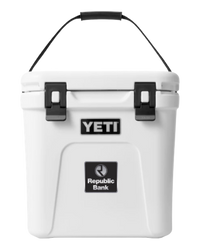The back-to-school season is upon us, and it can be a busy and stressful time for many reasons. The financial realities of a new school year start to settle in, including new clothes, shoes, school supplies, activity fees, textbooks, etc. The unavoidable fact is that back-to-school season tends to make a dent in your wallet and it can feel never-ending.
In fact, Americans spent a total of $135.5 billion for back-to-school and back-to-college shopping in 2023, meaning between $890 and $1,367 for the average household. The good news is, there are several ways to go about your financial planning in a smart and structured manner to help combat daunting back-to-school costs.
Start With a Well-Constructed Budget
The truth is, we have likely all been guilty at one point or another of purchasing back-to-school items that weren’t entirely necessary or a little out of our price range. It happens—we want our students to be set up for the best school year yet! But that also makes it easy to fall too far outside your budget.
Like any other personal spending, creating a budget is the cornerstone for smart financial planning, especially if you have more than one student in your household. Budgeting when it comes to back-to-school expenses can be a shared activity between parents and children. Not only is it important for you as a parent to understand your financial limits (and stick to them), but you can also use it as a learning opportunity for your child or children to understand smart budgeting.
For younger children, this can look like starting with a back-to-school shopping list that separates the necessities from the wants and helping them understand the prices of each item. With older students, you can encourage them to start their own budgeting process, whether that be manually or through a free online/mobile app to have a full picture of what everything costs and where the limit lies.
Starting a budget for back-to-school planning works best the sooner you can lay it out, but it’s never too late. Before you start swiping cards, put a structured and detailed budget into place that you know you’ll be able to stick to.
Look Into Education Savings and Financial Aid Options
While most education savings and financial aid options apply to college students and/or preemptive college savings, some funds can be used for certain K-12 expenses as well. For example, a 529 plan is an option that allows contributions to grow tax deferred, which can be taken out tax free if used for qualified expenses.
Some of the other benefits of 529 plans include the ability to use a portion of the funds to pay back student loans of the beneficiary (or siblings), and up to $35,000 left over in a 529 plan to be diverted into a Roth IRA. Parents, grandparents, and others can also contribute to a 529 plan for the intended beneficiary.
There is also a trust called Coverdell ESA in which the U.S. government assists families in savings. The beneficiary must be less than 18 years old when the account is opened, and the annual contribution limit is $2,000. These funds can be used for both college and K-12 expenses. They are also tax-free if used for designated educational purposes.
Spend Money Wisely
Now that you have a budget in place, think about the things you need to buy and determine where you might be able to strategically save. Can you stagger your back-to-school purchases? Your children likely won’t need new winter clothes starting at the beginning of the year, and one pair of shoes will get them through for a while.
In addition to that, look at the school supply list and what is required for your students. Are there any leftover school supplies from last year that can still be used? Can you rip out a few pages of a barely used notebook to repurpose? You can always purchase a new one down the road should it be necessary.
You might also want to consider buying used or refurbished technology like laptops or tablets instead of buying brand new if you still need some wiggle room to stick to your budget.
And last but not least, always be on the lookout for sales, back-to-school promos and discounts, and coupons. You can even use online tracking apps to keep an eye out for special deals or price drops.
Open a Student-Focused Banking Account
Many banks offer checking and savings accounts that are tailor-made for students. A student checking account offers perks for students aged anywhere from 13 to 24 that make the process of opening a bank account easier and more beneficial for first timers.
When you open a student checking account, you are also able to connect it to a student savings account that allows you to put money aside for bigger purchases such as a car, housing deposit, or future college funds. Depending on the bank, you may also be able to set up automatic transfers from savings to checking in the case of insufficient funds to help avoid unwanted overdraft charges on your account.
Interested in learning more about opening a student bank account? Reach out to our knowledgeable team members at Republic Bank by calling 800-526-9127. Plus, take a look through our library of other helpful financial tips.







